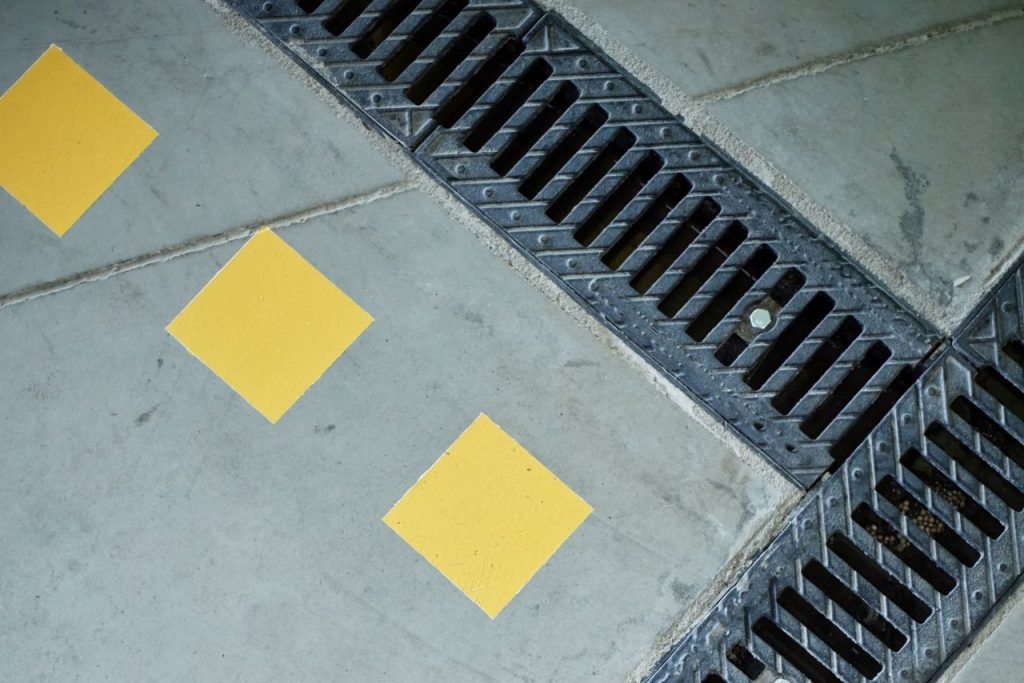Driveways are not just paved surfaces but channels for storm water, and without the right drainage systems, homeowners and contractors risk serious water damage to foundations, garages, and landscaping. One of the most reliable drainage solutions for driveways is the trench drain system, but implementing it is not without its challenges. From design to materials, every choice impacts performance, cost, and potential project delays.
The Role of Trench Drains in Water Management
A trench drain system is designed to manage water by capturing excess water at the surface and directing it into drain pipes, a storm drain line, or a catch basin. Commonly referred to as channel drains or channel trench drains, these systems prevent water from pooling on driveways and redirect it away from structures.
When properly paired with foundation drainage systems and sump pumps, trench drains form part of a larger water management network that protects both the home and the surrounding property. For high-volume areas, they may even connect to concrete storm drain pipes or municipal street water drain systems.
Key Components of Driveway Trench Drains
Building effective trench drains for driveways requires several essential components:
- Trench Body: This is the channel itself, which may be made from polymer concrete, HDPE, or precast concrete. Products like NDS trench drains offer lightweight yet durable solutions.
- Trench Drain Grates: The visible cover is typically made from stainless steel, galvanized steel, or ductile iron, depending on load requirements. These channel drain grates not only prevent water from pooling but also protect the channel from debris.
- Outlet Connections: The trench directs flow into drain pipes, a storm drain line, or concrete storm drain pipes.
- Catch Basin: In larger installations, a basin provides sediment collection and connects to downstream storm and trench drain networks.
Choosing between heavy duty materials like ductile iron or cost-effective galvanized steel depends on whether the driveway will handle passenger vehicles, delivery trucks, or industrial traffic.
Why Driveway Trench Drains Are Complex
Unlike flat surfaces, driveways often slope toward garages or the street. Designing trench drains for driveways requires careful grading so that excess water flows directly into the channel. Even small misalignments can leave low spots that collect water.
Another complexity lies in the environment. Driveways experience freeze-thaw cycles, vehicle traffic, and exposure to oils and deicing salts. Materials like stainless steel offer superior resistance to corrosion, while ductile iron grates provide unmatched strength for long term durability.
Finally, trench drains must integrate seamlessly with larger drainage systems. If improperly tied into a storm drain line, street water drain, or foundation drainage systems, water may back up, defeating the entire purpose.
Common Causes of Project Delays
Trench drain installations, especially for driveways, are prone to delays due to a mix of design and construction challenges:
- Improper planning: Contractors sometimes underestimate flow rates, leading to undersized channels that cannot manage water during heavy storm water events.
- Material shortages: Specialty items like channel drain grates in stainless steel or ductile iron may not always be available, holding up installation.
- Incorrect slopes: Achieving precise grades for a channel trench drain requires time and attention. Errors discovered late can delay paving.
- Integration with other systems: Tying into municipal storm and trench drain lines or existing catch basins often requires permits and inspections.
- Installation difficulties: Even products marketed as easy installation can become time-consuming if excavation reveals poor soil conditions or obstructions.
Project managers who anticipate these issues early can reduce costly setbacks.
Preventing Failures in Driveway Trench Drains
To avoid failures that require remediation, contractors should focus on these areas:
- Material selection: For residential projects, galvanized steel may suffice, but for commercial driveways, heavy duty ductile iron or stainless steel ensures long term durability.
- Proper grate sizing: Choosing the right trench drain grate or channel drain grates ensures debris stays out without restricting flow.
- Integration with systems: Linking to foundation drainage systems, sump pumps, or municipal storm drains ensures water is moved safely off-site.
- Reinforced concrete support: Surrounding the channel with reinforced concrete prevents shifting or cracking under vehicle weight.
- Maintenance planning: Even the best drainage solutions fail if leaves, sediment, or ice clog the grate. Regular inspection keeps systems functional.
Balancing Performance and Installation
For contractors, the key to success lies in balancing system strength with constructability. Products like NDS trench drains are valued for their lightweight bodies and easy installation, making them quicker to place than traditional cast-in-place options. Meanwhile, using trench drain grates in ductile iron ensures resilience against heavy vehicles.
Each drainage system must be site specific. In some cases, driveways require multiple channels or connections to nearby storm and trench drain systems to handle extreme storm water events. In others, a single channel trench drain tied into a catch basin suffices.
Conclusion
Driveway trench drains are powerful tools in water management, but they come with complexities that demand careful planning. From choosing the right channel trench drain materials like stainless steel, galvanized steel, or ductile iron, to ensuring proper grading and integration with storm drain lines, every step matters.
Delays often arise from undersized systems, supply issues, or poor installation practices. By focusing on long term durability, anticipating challenges, and leveraging proven products such as NDS trench drain systems, contractors can deliver drainage solutions that protect properties and prevent water damage for decades.
Prime Contractor Supply offers the trench drain system products, grates, and fittings that make these projects successful. With the right planning and materials, contractors can turn driveway drainage challenges into opportunities for lasting performance.

